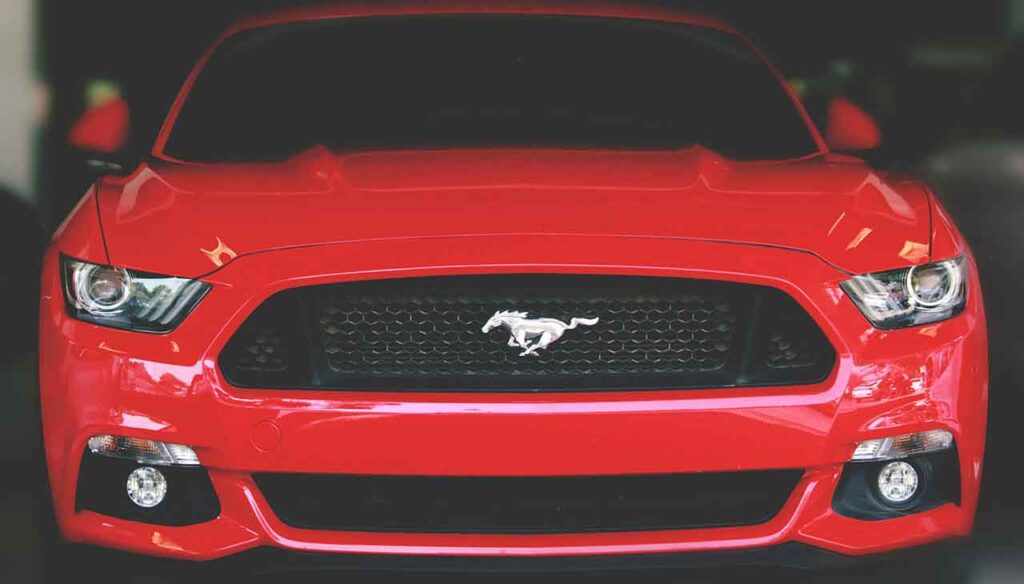Introduction to the Ford Mustang
Few cars have captured the imagination of car enthusiasts and the broader public alike quite like the Ford Mustang. Since its debut in 1964, the Mustang has become more than just a car—it’s an American icon. This blog post will take you on a ride through the history of the Ford Mustang, exploring its humble beginnings, major milestones, cultural impact, and future outlook.
The Birth of an Icon
The Ford Mustang made its grand debut on April 17, 1964, at the New York World’s Fair. The brainchild of Lee Iacocca, the Mustang was designed to be an affordable, stylish, and high-performing car aimed primarily at younger customers. The first Mustang featured a long hood, short rear deck, and a range of customizable options, making it an instant hit.
One of the key features that set the original Mustang apart was its versatility. It came with either a hardtop or convertible body style, and buyers could choose from a variety of engines and transmissions. This flexibility allowed the Mustang to cater to a wide range of customers, from those seeking a sporty weekend car to those looking for a reliable daily driver.
The marketing campaign for the Mustang was also groundbreaking. Ford’s “Mustang Mania” included television commercials and print ads that captured the car’s sense of freedom and adventure. Within the first 18 months, Ford sold over one million Mustangs, cementing its place in automotive history.
Milestones Over the Decades
The 1970s and 80s
The 1970s saw the Mustang evolve in response to changing consumer preferences and regulatory pressures. The second-generation Mustang, introduced in 1974, was smaller and more fuel-efficient, a necessity during the oil crisis. Despite its downsized engine and body, the Mustang II still maintained the core elements that made it popular.
The 1980s brought a return to performance with the introduction of the Mustang GT. Equipped with a V8 engine, the GT offered improved power and handling, making it a favorite among driving enthusiasts. The third-generation Mustang also featured a sleeker, more aerodynamic design, reflecting the era’s styling trends.
The 1990s and 2000s
The 1990s marked a return to the Mustang’s roots with the fourth generation. Ford reintroduced design elements from the original 1960s models, such as the tri-bar taillights and the running horse emblem. This generation also saw the introduction of the high-performance SVT Cobra, which featured a supercharged V8 engine and advanced suspension system.
The new millennium brought further technological advancements. The fifth-generation Mustang, introduced in 2005, featured modern amenities like a digital dashboard and advanced safety features. Yet, it retained the classic design elements that made the Mustang a timeless icon. Special editions like the Shelby GT500 pushed the boundaries of performance with their powerful engines and cutting-edge technology.
The 2010s to Today
The current, sixth-generation Mustang, launched in 2015, showcases the latest in automotive innovation. With independent rear suspension, turbocharged EcoBoost engines, and advanced driver-assistance systems, the modern Mustang blends performance with efficiency and safety. The introduction of the Mustang Mach-E in 2020 marked a significant shift, as Ford ventured into the electric vehicle market while maintaining the Mustang’s high-performance ethos.
Mustang in Pop Culture
The Ford Mustang’s influence extends far beyond the automotive world. Its presence in movies, music videos, and television shows has solidified its status as a cultural icon. One of the most famous appearances is in the 1968 film “Bullitt,” where Steve McQueen’s Mustang GT fastback took center stage in one of the most thrilling car chase scenes in cinema history.
The Mustang has also made its mark in the music industry. Songs like Wilson Pickett’s “Mustang Sally” and The Rolling Stones’ “Mustang Sally” celebrate the car’s rebellious spirit. Its sleek design and powerful performance have made it a favorite in music videos, often symbolizing freedom and adventure.
In the world of television, the Mustang has appeared in numerous shows, from “Knight Rider” to “Mad Men.” Its recurring presence in pop culture underscores its enduring appeal and iconic status.
The Future of Mustang
Looking ahead, the future of the Ford Mustang promises to be as exciting as its past. Ford is committed to integrating cutting-edge technology without sacrificing the Mustang’s core identity. The introduction of the Mustang Mach-E, an all-electric SUV, demonstrates Ford’s willingness to innovate while staying true to the brand’s performance roots.
Future models will likely feature advancements in autonomous driving, connectivity, and sustainability. Ford’s vision for the Mustang includes leveraging artificial intelligence and machine learning to enhance driving experiences, such as predictive maintenance and personalized driving modes.
Additionally, Ford is exploring hybrid and fully electric versions of the traditional Mustang, aiming to combine high performance with environmental responsibility. These innovations will ensure that the Mustang remains relevant and competitive in the evolving automotive landscape.
Conclusion
The Ford Mustang’s evolution from a 1960s icon to a modern-day powerhouse is a testament to its enduring appeal and adaptability. With each generation, the Mustang has managed to stay true to its roots while embracing new technologies and design trends. Whether you’re a longtime fan or a newcomer to the Mustang world, there’s no denying its impact on automotive history and pop culture.
If you’re as fascinated by the Mustang’s legacy as we are, why not take a closer look? Join the Mustang community, explore upcoming models, and stay updated on the latest news by signing up for our newsletter.
The Ford Mustang has always been about more than just transportation—it’s about the thrill of the ride. Here’s to the next chapter in the Mustang’s storied history.

